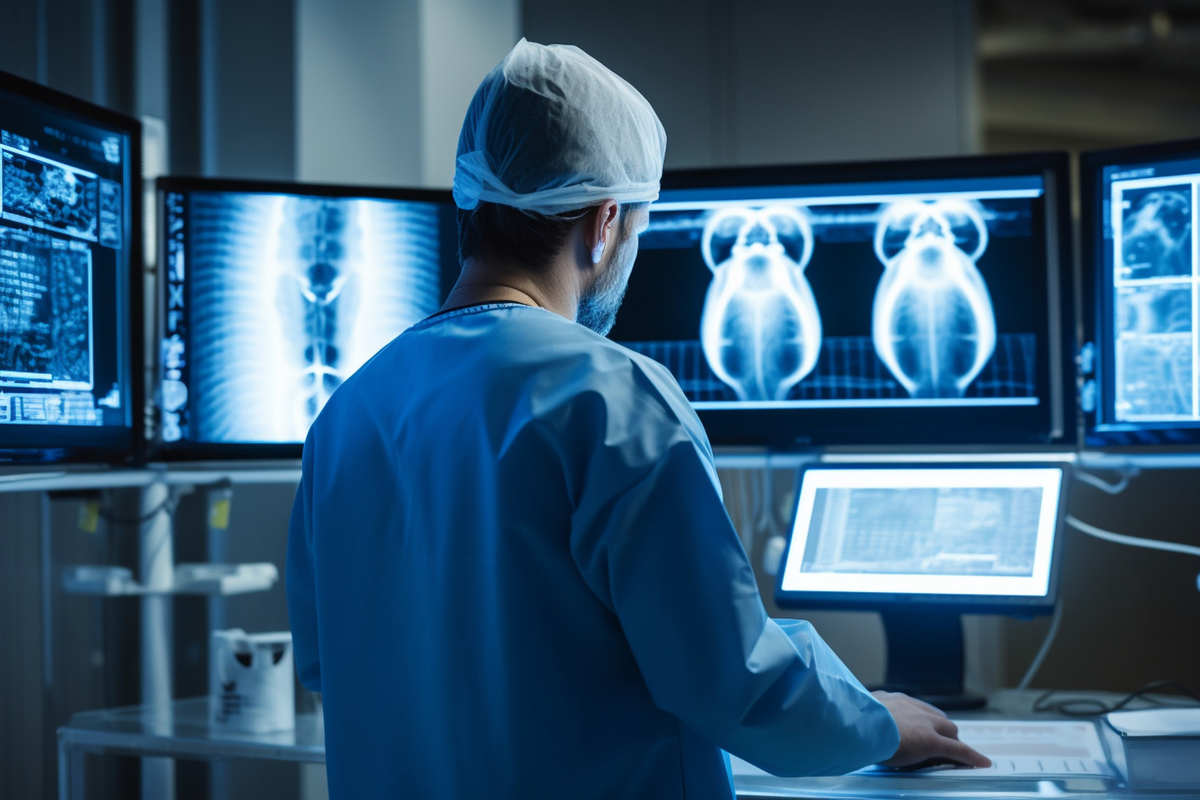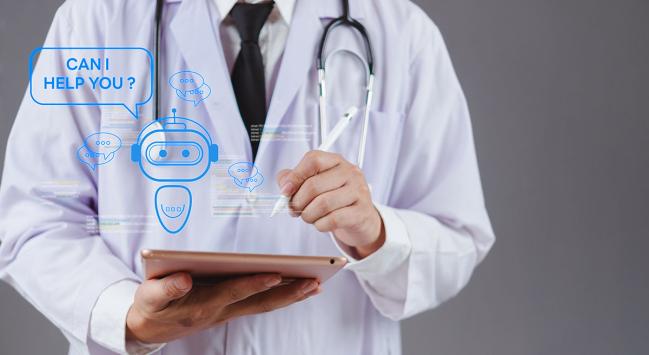Your cart is currently empty!
How AI is Changing Diagnosis: What Patients Should Know



Introduction
In recent years, artificial intelligence (AI) has moved from being a futuristic concept to becoming a concrete part of modern medical diagnostics. For patients, this means that the way doctors detect, interpret and act on medical conditions is changing — sometimes in subtle ways, sometimes quite dramatically. Understanding how AI is being used — its benefits, limitations and implications — empowers patients to participate more intelligently in their own care.
This article will walk you through:
- What kinds of diagnostic tasks AI is helping with today
- The most up-to-date research and real-world deployments of diagnostic AI tools
- What it means for you as a patient: opportunities, risks and things to ask your doctor
- How to weigh AI-based diagnostics in your medical journey
What kinds of diagnostic tasks can AI help with?
AI in diagnostics broadly splits into several categories. These help give patients a clearer picture of where AI might show up in their care.
1. Medical imaging & pattern recognition
AI systems are particularly strong in analysing images (such as CT scans, MRIs, ultrasound, pathology slides) because they can detect patterns or subtle signals that human eyes may miss. For example:
- In a recent UK trial, an AI-enabled stethoscope (paired with ECG and AI sound/flow analysis) was able to diagnose major heart conditions (heart failure, valve disease, atrial fibrillation) in about 15 seconds — and with significantly higher detection rates compared with a normal stethoscope. The Guardian
- A review in the BMJ notes that AI-supported diagnostic methods are enhancing access to things like cancer screening (e.g., cervical cancer) especially in low-resource settings. BMJ
2. Predictive analytics and early detection
Rather than simply analysing current data, some AI tools aim to predict future disease risks — i.e., detect that something is likely to go wrong well before clinical symptoms appear. Examples:
- A machine-learning model in the UK trained on data from ~500,000 people was able to predict many diseases years before manifesting, including Alzheimer’s, kidney disease, COPD. World Economic Forum
- A recent news story described a model called Delphi-2M developed by EMBL which predicts susceptibility to over 1,000 diseases, validated across large cohorts in Europe. Financial Times
3. “Explainable” AI and decision support
Increasingly, the emphasis is not just on “what is the diagnosis?” but also “how did the AI get there?” In one case, researchers developed an AI system named Dr. CaBot that explains its reasoning (its differential diagnoses, its logic) as a clinician would. HMS Harvard This kind of transparency matters for trust, for patients and doctors alike.
4. Workflow augmentation and triage
AI is also being used behind the scenes to support clinicians: triaging cases, summarising patient data, helping doctors decide which tests to order, and reducing the administrative burden so clinicians can focus more on care. For example, the American Medical Association (AMA) uses the concept of augmented intelligence (AI that assists rather than replaces clinicians) and emphasises responsible deployment. American Medical Association
Real-world deployments & latest research
Here are some of the most current, tangible examples of AI diagnostics in action, and what they mean.
AI stethoscope for heart conditions
In the UK, researchers at Imperial College London and its associated NHS trust developed an AI-powered stethoscope that listens to heart sounds + records a short ECG, then sends the data for AI analysis. The result:
- In about 12,000 symptomatic patients, the AI was twice as likely to detect heart failure and three times as likely to detect atrial fibrillation compared with a traditional stethoscope. The Guardian
- This shows how AI can bring high-level detection closer to primary care (GP level) rather than specialist hospitals.
What it means for patients: If you have symptoms like breathlessness, fatigue or palpitations, AI-enabled tools may mean faster detection. But very importantly, the study authors caution: this is not yet a tool for routine screening in people without symptoms (higher false positive risk).
Large-scale disease-risk prediction
The model called Delphi-2M (mentioned above) was trained on UK Biobank data and validated on nearly 2 million patient records in Denmark. It predicted susceptibility to over 1,000 diseases decades ahead. Financial Times
What it means for patients: In future, you might receive risk-assessments that are much more granular and personalized than today’s “you have a 15% lifetime risk of heart disease” style. However, these tools are not yet widely used clinically; they are still “proof of concept”.
Diagnostic reasoning AI (Dr. CaBot)
Researchers at Harvard Medical School developed Dr. CaBot, which publishes its reasoning (differentials and narrowing) in the *New England Journal of Medicine (NEJM)-style case-study context — marking a first. HMS Harvard
For patients: This indicates the trajectory: AI not just giving a “diagnosis” but actually showing how it got there. That may improve transparency, help doctors explain things to you, and support more informed decision-making.
Regulation, oversight & safety
Research emphasises that while the promise is large, there are serious challenges:
- The 2025 paper “AI, Health, and Health Care Today and Tomorrow” notes that AI will disrupt every part of healthcare delivery — but also that “the optimal path for AI development and dissemination remains unclear.” JAMA Network
- The AMA policy piece emphasises ethics, transparency, physician oversight, liability and governance must keep up. American Medical Association
- Legal/ethics concerns: experts warn that as AI is adopted, it may become harder to determine liability for diagnostic mistakes (was it the AI, the clinician, the institution?). The Guardian
Key takeaway for patients: When a diagnosis involves an AI tool, asking about how it was used, how confident the doctor is in its output, and whether human review was part of the process is valid and wise.
What this means for you as a patient
Here’s a breakdown of the meaningful changes you may experience — and the questions you should ask — when AI touches the diagnostic process.
✅ Benefits
- Faster diagnosis: AI can process vast datasets very quickly; for example identifying heart conditions in seconds, or flagging risk of future disease.
- Greater sensitivity / earlier detection: Particularly for conditions where early diagnosis improves outcomes (cancers, cardiovascular disease) AI may detect earlier or detect subtler signals.
- Personalised risk stratification: AI tools that synthesise many variables (genomics, imaging, biomarkers) may give a more precise risk profile, allowing preventive actions.
- Support for clinicians: AI may reduce oversight or decision-fatigue for doctors, meaning better-resourced time for you, the patient.
⚠️ Risks and limitations
- False positives / over-diagnosis: Tools that are extremely sensitive may pick up abnormalities that might never cause harm — leading to stress, extra tests, perhaps overtreatment.
- False negatives / bias: AI systems may perform worse in populations under-represented in training data (e.g., ethnic minorities, rural populations).
- Opacity (“black-box”): Some AI models offer predictions without easy explanations — if you don’t know how the diagnosis was reached, that may reduce trust.
- Reliance on AI rather than clinician judgement: The AMA emphasises AI should augment, not replace, clinician decision-making. American Medical Association
- Liability and transparency: If an AI tool errs, who is responsible? Some legal/ethical frameworks are still catching up. The Guardian
- Data privacy and security: AI tools often rely on large data transfers, cloud processing — protecting your health data is essential.
🧐 Questions to ask your doctor or care team
When you suspect AI may be part of your diagnostic process, some helpful questions include:
- “Was an AI tool used in interpreting my scans / data?”
- “How confident is the output of the AI? Was it confirmed or reviewed by a human clinician?”
- “What are the risks of false positives or negatives in my case?”
- “How is my data being used? Is it stored and processed securely and anonymously?”
- “If the AI flagged something, what is the next step? More testing? Specialist referral?”
- “How does this tool compare with standard (non-AI) practice in terms of accuracy, cost and outcomes?”
🔮 What to watch going forward
- More AI tools entering clinical practice (e.g., AI for triage, for pathology, multi-modal diagnosis combining imaging + genomics + clinical data).
- Increased regulation and governance of diagnostic AI: transparency, auditing, performance standards.
- Access issues: will advanced AI-diagnosis be available globally (including low- and middle-income countries), or only in major centres? Some work is already happening. BMJ
- Cost-effectiveness and health-outcomes evidence: studies will need to show that AI not only diagnoses earlier or better but actually improves patient outcomes and is cost-effective.
- Patient education and literacy: as AI plays a bigger role, patients will benefit from understanding what it means and how to engage with it.
Summary: The bottom line
AI is reshaping diagnosis in healthcare — faster scans, deeper pattern recognition, earlier risk detection, and smarter decision-support for clinicians. For patients, this means potential for better outcomes, more personalised care, and a different kind of partnership with your doctor.
But the technology is not a miracle solution. AI tools are best seen as part of a team: you + your doctor + the AI tool. Be aware of limitations, ask informed questions, and ensure transparent communication. As AI diagnostics become more widespread, patients who understand its role will be in a stronger position.

Leave a Reply